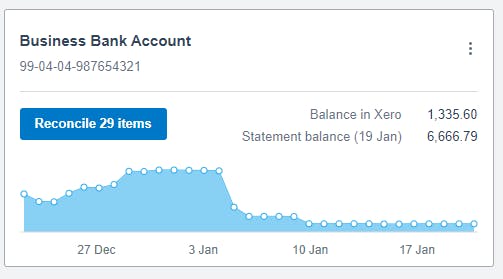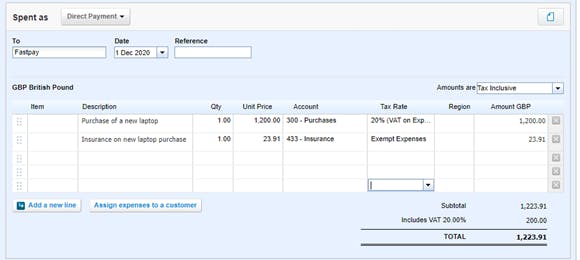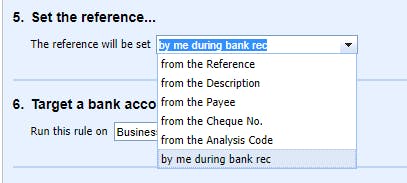Reconciling your bank account on accounting software might sound daunting, but it is usually quite simple. Effectively what you are doing is going down a list of incomings and outgoings in your bank account and classifying them according to the available coding in your software.
All software will have a slightly different chart of accounts (effectively a list of all available codes), and most will have the option for you to add your own custom ones to suit the needs of your business.
The exact process will vary depending on what software you are using. The below will show you how do to this on Xero. Please note that all images are from the Xero demo company account. Feel free to switch to this by clicking the name of your business in the top left of the screen and selecting Change Organisation to have a play around with how this all works.
To get to the bank reconciliation screen, you can either click the Reconcile x items button on your Dashboard (showing below as Reconcile 29 items), or you can select Accounting and then Bank Accounts from the top menu.

You will then see a list of all unreconciled transactions in your bank account that you need to review. There are several ways to reconcile a line on the bank account. The simplest ways are listed below.
A note about VAT
If you are VAT registered, then there will be certain things that you need to ensure that you are doing. Firstly, all sales will need to have the relevant VAT attached. If you are invoicing then this will be done at the invoice stage, however if you are classifying transactions as they appear on your bank statement, then you will need to make sure the VAT rate is being selected when you classify the transaction. This will come up as Tax Rate on the right-hand side, which you can see on the below screenshots.
If you are making VAT purchases, then you can only reclaim the VAT if you have a VAT invoice from your supplier. If you don’t, then you will be unable to reclaim the VAT. Again, ensure that the correct VAT rate is selected in the Tax Rate section.
Creating a match

For this line item there is nothing suggested by Xero. The way to reconcile it would most likely be to enter the details in the Who, what and why boxes and then select OK.
If you start typing a name in Who it will come up with any suggestions for people or companies that you have interacted with previously. If it relates to someone or a company you have not logged before, you can create a new contact from here.
The What will define where the transaction is coded in your accounts. It is important to get this as accurate as possible here to save time late. You can start typing in the type of cost or income and Xero will make suggestions. If there is not an appropriate code, feel free to ask your accountant what they think it should be, and if necessary a new code can be added.
The Why box allows you to enter further details about the transaction. You might end up with something like the below:

If you are happy with this, click the OK button that has appeared, and the line will be moved from your outstanding reconciliations and be in the correct place in the accounts.
It may be that the item relates to several different things. If that is the case, click add details and you can itemise it as below.

If you have previously bought or sold something similar, Xero may try to guess what the line relates to as can be seen below. It is important that you review every transaction before you click ok, however after Xero has been used for a while, the suggestions should be fairly accurate and allow you to progress through the reconciliation process fairly swiftly.

Adding receipts and invoices
We would always recommend that you attach receipts or invoices from your suppliers – this is especially the case if you are reclaiming VAT on your purchases. This will allow you to easily get proof of the purchase if you are ever asked to provide backup to HMRC. This does make the process below take slightly longer, but would be worthwhile in the long run as if questioned, you may need to spend a long time finding the appropriate invoice.
To attach a document, you will always need to click Add Details and then select the little paper icon at the top right which will allow you to upload the paperwork. It is possible to email documents directly to your Xero account to save time. I will cover that in an future blog post.
Invoicing and billing
If you use the invoicing functions within Xero, the software should automatically try to match the items as below, and all you need to do is click OK to finish the reconciliation. These items are green because Xero is very confident that this is the correct match. However, it will still be important to review these, especially if you issue several invoices for the same amounts. If there is more than one invoice for the same amount, there will be an option to look at other matches.

The below transaction on this screenshot is a purchase where you have added a bill. This is not functionality that many clients use within Xero. If you buy or receive goods at a standard price and there is more than one Invoice or Bill in Xero for this amount, there will be an option to look at other matches.
Rules
Another way to save time at the reconciliation stage is to set up rules within Xero. If you have similar transactions month on month, for example your Xero subscription, then you can set up a rule to code it in a particular way. Once a rule is in place Xero will automatically give you an option to reconcile the item as below.

In order to set up a rule, select Options above the payment you want to set up a rule for and then Create bank rule.

Xero will then automatically try to create a spend money or receive money rule based on whether you spent or received the cash for the item you selected. You can have several different conditions attached to when the rule is applied. I find it is best to simplify the rule to make it apply to as many transactions as possible.
For example, if the Description varies from month to month such as Xero March 2020, Xero April 2020 etc, then I would change the Description field to “Contains” and then the text box just to “Xero”. I also like to only have one condition for each rule to enable it to be used as widely as possible. You can always come back and make it more narrow later if it is trying to apply the rule to too many transactions.

In the second part you need to select the contact. You can start typing their name and if you have dealt with them previously, they should appear. If not, you can create a new contact.

The important sections here are 3 and 4. You can have various ways of splitting the amount. If it is always completely one thing (e.g. your electricity bill is always coded completely to electricity) then you can select 100% to account Electricity in section 4.
If the bill is always split in a certain percentage between different types of items, then you can also do that. For example, if it is always 75% marketing costs and 25% consultancy you can do that in section 4.
You can also add a fixed amount of the bill to certain codes. For example, if you have a bill where you pay a flat monthly fee for line rental, but then a variable amount for calls, you can add the fixed amount in section 3 with the variable amount being coded differently in section 4.

Section 5 allows you to define how the reference is set from a number of dropdown options.

Section 6 allows you to say whether the rule should only be applied on the bank account the transaction relates to or all of your bank accounts.

Finally you can give the rule a name which will help you find it if you ever need to amend it in any way. If you then click Save you will be taken back to the bank reconciliation screen and you will see that your transaction should hopefully now want you to apply your new rule.

Getting started
Hopefully this gives you a good basic knowledge of how to reconcile a bank account in Xero. The best thing to do is to start trying to reconcile, following the above steps and seeing how you get on. Your accountant should be happy to support you with any queries that you may have about this process.


